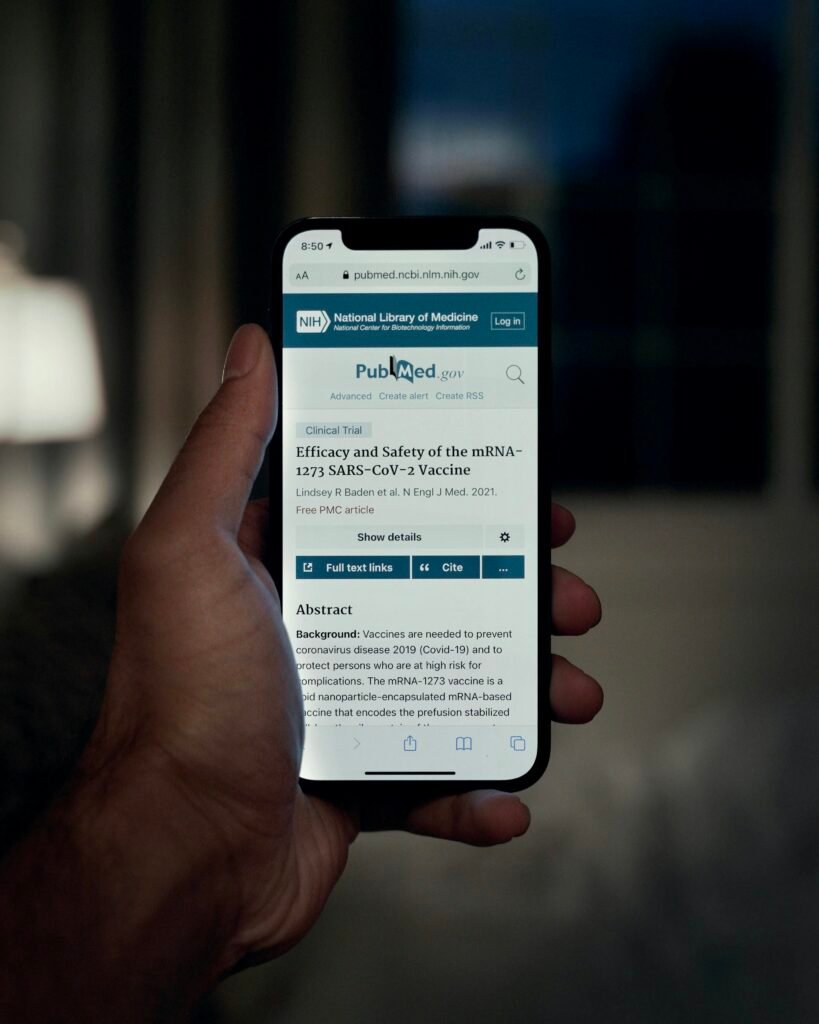
Living with COPD can be challenging, but by implementing the best practices for COPD management, you can significantly improve your quality of life. From effective medication management and pulmonary rehabilitation to adopting a healthy lifestyle and creating a support system, this article explores the key strategies and approaches to help you manage your COPD symptoms and lead a fulfilling life. Whether you have recently been diagnosed or have been living with COPD for a while, these best practices will empower you to take control of your health and enjoy every moment to the fullest.

Medication Management
Understanding your medications
A crucial aspect of managing COPD is understanding your medications. Speak with your healthcare provider to fully comprehend the purpose, dosage, and potential side effects of each medication prescribed to you. By understanding your medications, you can ensure that you take them correctly and reap their maximum benefits.
Taking medications as prescribed
To effectively manage your COPD, it is essential to take your medications as prescribed by your healthcare provider. This may include inhalers, oral medications, or other forms of treatment. Develop a routine for taking your medications at the designated times each day, and set reminders if needed. By consistently adhering to your medication regimen, you can optimize its effectiveness and alleviate symptoms.
Keeping track of medications
Maintaining a medication tracking system is crucial in managing COPD. Consider using a pill organizer or a smartphone application to keep track of your medications. This will help you avoid missing doses or accidentally taking the wrong medication. Additionally, keeping a record of any changes or adjustments made to your medication can assist your healthcare provider in tailoring your treatment plan.
Managing side effects
Some COPD medications may cause side effects, such as dry mouth, headaches, or an upset stomach. It’s important to promptly report any side effects to your healthcare provider, as they may be able to adjust your medication or prescribe additional medications to alleviate these symptoms. Open communication is key in effectively managing any side effects you may experience.
Quitting Smoking
Seeking professional help
One of the most impactful steps you can take to manage COPD is quitting smoking. Seek support from healthcare professionals, such as doctors or smoking cessation counselors, who can provide guidance and resources to help you quit. They can assist in creating a personalized plan suited to your individual needs and help you navigate the challenges that may arise during the quitting process.
Joining a support group
Joining a support group can provide immense comfort and motivation while quitting smoking. Connecting with others who are going through similar experiences can offer emotional support and valuable insights. These groups often provide a platform to share successes, challenges, and coping strategies. Being surrounded by individuals who understand can strengthen your determination to quit smoking and manage COPD effectively.
Finding alternative coping mechanisms
Identifying alternative coping mechanisms is essential during the quitting journey. Replacing smoking as a coping mechanism with healthier alternatives can help manage cravings and reduce the risk of relapse. Engaging in activities like exercise, yoga, or pursuing hobbies and interests can distract from the urge to smoke and provide a sense of fulfillment.
Creating a quitting plan
Creating a personalized quitting plan is a vital step towards managing COPD. Set a quit date and outline the strategies, resources, and support systems you will employ. This plan may include nicotine replacement therapy, counseling, or other evidence-based techniques. By outlining a roadmap for quitting, you increase your chances of success and improve your overall COPD management.
Exercise and Physical Activity
Consulting with a healthcare professional
Before starting any exercise regimen, it is crucial to consult with your healthcare professional. They can assess your current health status, evaluate any potential risks, and recommend appropriate exercises based on your abilities and limitations. By seeking their guidance, you can ensure that your exercise routine aligns with your COPD management plan.
Choosing appropriate exercises
When managing COPD, it’s important to choose exercises that improve your cardiovascular fitness, strengthen your muscles, and enhance your overall respiratory function. Low-impact activities such as walking, swimming, or cycling are often ideal choices. These exercises can improve your lung capacity, reduce shortness of breath, and enhance your overall well-being.
Creating an exercise routine
Establishing a consistent exercise routine is integral to effectively manage COPD. Aim to engage in moderate-intensity exercises for at least 30 minutes on most days of the week. Break down your exercise sessions into manageable increments, allowing for rest and recovery. Gradually increase the duration and intensity of your workouts as your fitness levels improve.
Monitoring oxygen levels during exercise
During exercise, monitoring your oxygen levels is crucial to ensure safety and optimize your COPD management. Use a pulse oximeter to regularly measure your oxygen saturation levels. If your levels drop significantly or you experience symptoms such as dizziness or extreme shortness of breath, stop exercising and seek medical attention. Monitoring can help you gauge your limits and exercise within a safe and beneficial range.
Nutrition and Diet
Eating a balanced diet
Maintaining a balanced diet is essential for managing COPD effectively. Ensure that your diet consists of a variety of nutrient-rich foods, including fruits, vegetables, lean protein, whole grains, and healthy fats. A balanced diet can provide the necessary nutrients to support your immune system, maintain muscle strength, and enhance overall respiratory function.
Choosing COPD-friendly foods
Certain foods can specifically benefit individuals with COPD. Including foods rich in antioxidants, such as berries, leafy greens, and citrus fruits, can help reduce inflammation in the airways and promote respiratory health. Additionally, incorporating foods high in omega-3 fatty acids, such as fatty fish or flaxseeds, can have anti-inflammatory effects on the lungs.
Managing weight and portion control
Maintaining a healthy weight is important for individuals with COPD, as excess weight can put strain on the respiratory system. If weight management is necessary, consult with a registered dietitian to develop a personalized plan. Practice portion control, emphasizing moderate portions of nutrient-dense foods to support optimal nutrition without excessive caloric intake.
Staying hydrated
Staying hydrated is essential in managing COPD, as it helps thin mucus and facilitates easier breathing. Aim to drink an adequate amount of water throughout the day, and consider increasing your fluid intake if you experience thick or sticky mucus. However, consult with your healthcare provider if you have fluid restrictions or other medical conditions that require monitoring fluid intake.

Breathing Techniques
Practicing pursed-lip breathing
Pursed-lip breathing is a technique commonly used in managing COPD symptoms. It involves inhaling through the nose and exhaling slowly through pursed lips, as if blowing out a candle. This technique helps regulate breathing, prevents air trapping, and reduces shortness of breath. Practice pursed-lip breathing during activities that cause breathlessness or whenever you feel the need to regulate your breathing.
Using diaphragmatic breathing
Diaphragmatic breathing, also known as belly breathing, is a technique that helps maximize the use of your diaphragm, the main muscle involved in respiration. To practice diaphragmatic breathing, place one hand on your abdomen and inhale deeply through your nose, allowing your belly to rise. Exhale slowly through pursed lips, tightening your abdominal muscles. Diaphragmatic breathing can improve lung function and decrease shortness of breath.
Using huff coughing technique
The huff coughing technique is particularly beneficial for individuals with COPD who struggle with excessive mucus production. To perform this technique, take a deep breath in and exhale forcefully through an open mouth with a “huff” sound. This helps mobilize mucus from the lower airways, making it easier to clear your lungs. Practice huff coughing when you feel congested or to clear excess mucus before performing other breathing exercises.
Trying inspiratory muscle training
Inspiratory muscle training involves using a device called an inspiratory muscle trainer to strengthen the muscles responsible for inhaling. By regularly using this device, you can improve respiratory muscle strength and endurance. Consult with your healthcare provider to determine if inspiratory muscle training is suitable for you and to receive guidance on proper usage.
Avoiding Triggers and Irritants
Identifying personal triggers
Identifying and avoiding triggers that worsen your COPD symptoms is crucial for effective management. Common triggers include tobacco smoke, air pollution, dust, pollen, certain chemicals, and respiratory infections. Keep a record of potential triggers and take necessary precautions to minimize exposure.
Creating a clean indoor environment
Ensuring a clean and pollutant-free indoor environment is vital in managing COPD. Regularly clean your living space, vacuum carpets, and invest in high-efficiency particulate air (HEPA) filters to trap airborne irritants. Maintain good ventilation and avoid using harsh cleaning products or aerosols that can worsen respiratory symptoms.
Reducing exposure to air pollution
Polluted air can severely aggravate COPD symptoms. Check local air quality reports and avoid spending time outdoors during periods of high pollution. If necessary, wear a mask designed to filter small particles when venturing outside. Consider using air purifiers in your home to improve indoor air quality.
Avoiding respiratory infections
Individuals with COPD are more susceptible to respiratory infections, which can worsen symptoms and lead to flare-ups. Take preventive measures such as practicing good hand hygiene, avoiding close contact with individuals who are sick, and getting recommended vaccinations, including the flu and pneumonia vaccines. Regularly washing your hands and using hand sanitizers can help reduce the risk of infections.

Pulmonary Rehabilitation
Understanding the benefits of pulmonary rehabilitation
Pulmonary rehabilitation is a comprehensive program that combines exercise, education, and support to improve the overall well-being of individuals with COPD. It focuses on enhancing exercise capacity, reducing symptoms, and increasing functionality. Understanding the benefits of pulmonary rehabilitation, such as improved lung function, increased energy levels, and enhanced quality of life, can help motivate individuals to participate in these programs.
Finding a pulmonary rehabilitation program
Speak with your healthcare provider to find a suitable pulmonary rehabilitation program near you. These programs are often offered in hospitals, outpatient clinics, or community centers. Consider factors such as accessibility, program structure, and the availability of multidisciplinary healthcare professionals when selecting a program that aligns with your needs.
Participating in exercise and education sessions
Pulmonary rehabilitation programs typically consist of exercise sessions tailored to your individual capabilities and needs. These exercises aim to improve cardiovascular fitness, strength, and overall respiratory function. Education sessions are also an integral part of rehabilitation, providing information about COPD self-management strategies, medication management, breathing techniques, and more.
Setting goals for rehabilitation
Setting personal goals during pulmonary rehabilitation can enhance motivation and improve outcomes. Work with healthcare professionals to establish realistic and achievable goals, whether they involve improving exercise capacity, reducing symptoms, or enhancing daily activities. Tracking progress and celebrating milestones along the way can provide a sense of accomplishment and further enhance your commitment to COPD management.
Managing Anxiety and Depression
Seeking mental health support
Managing COPD involves addressing not just the physical aspects but also the emotional well-being. COPD can often lead to anxiety and depression due to the challenges it presents. Seek support from mental health professionals who can provide counseling or therapy to address these emotional concerns. They can equip you with coping strategies and help improve your overall mental health.
Participating in relaxation techniques
Engaging in relaxation techniques can be highly beneficial for managing anxiety and depression associated with COPD. Techniques such as deep breathing exercises, meditation, mindfulness, or guided imagery can help reduce stress, improve mood, and foster a sense of calmness. Incorporating these techniques into your daily routine can provide a valuable coping mechanism.
Engaging in enjoyable activities
Participating in activities that bring you joy and fulfillment is essential in managing COPD and improving mental well-being. Engage in hobbies, spend time with loved ones, read, listen to music, or engage in creative pursuits. Taking time for enjoyable activities can uplift your spirits, alleviate stress, and enhance your overall mental resilience.
Creating a support system
Building a strong support system can significantly impact your ability to manage COPD and maintain good mental health. Seek the support of family members, friends, or fellow COPD sufferers who can provide understanding, encouragement, and practical assistance. Joining support groups or online communities can also enable you to connect with individuals who share similar experiences and provide additional sources of support.
Regular Check-ups and Monitoring
Scheduling regular appointments with healthcare professionals
Regular check-ups with healthcare professionals are crucial in effectively managing COPD. Schedule routine appointments to monitor your condition, discuss any concerns, and evaluate the effectiveness of your treatment plan. These appointments also provide an opportunity to update medications, receive important vaccinations, and assess any changes or developments in your overall health.
Taking ongoing lung function tests
Lung function tests, such as spirometry, are essential in monitoring COPD progression and assessing the effectiveness of your treatment. These tests measure lung capacity, airflow rates, and other vital parameters. Follow your healthcare provider’s recommendations for regular lung function tests to track changes and adjust your treatment plan accordingly.
Monitoring symptoms and flare-ups
Vigilantly monitoring your symptoms is crucial for effective COPD management. Pay attention to changes in cough, sputum production, breathlessness, or overall respiratory function. If you notice any significant changes or experience flare-ups, promptly report them to your healthcare provider. Monitoring symptoms allows for early intervention and adjustments to your treatment plan as needed.
Adjusting treatment plan accordingly
Regular check-ups and monitoring provide opportunities for healthcare providers to evaluate your treatment plan and make necessary adjustments. Based on your symptoms, lung function tests, and overall health, your provider may recommend changes in medications, inhalers, or other treatment methods. Collaborate closely with your healthcare team to ensure your treatment plan is optimized for managing COPD effectively.
Educating Yourself and Staying Informed
Learning about COPD and its management
Educating yourself about COPD is essential in becoming an active participant in your own management. Seek reliable sources of information, such as reputable websites, books, and educational materials provided by healthcare organizations specializing in COPD. Understanding the disease, its causes, symptoms, and treatment options enhances your ability to make informed decisions and actively engage in your care.
Staying updated on new research and treatments
COPD management strategies are continually evolving as new research and treatments emerge. Stay updated on the latest advancements by following reputable medical journals, attending conferences, or engaging with healthcare professionals who specialize in COPD. By staying informed, you can explore new treatment options and actively participate in discussions about your care.
Attending COPD education programs
COPD education programs offer valuable insights, resources, and support for individuals managing the disease. These programs may be offered by healthcare facilities, community centers, or patient advocacy organizations. Attending COPD education programs can enhance your knowledge, connect you with experts, and provide opportunities to interact with individuals experiencing similar challenges.
Utilizing online resources and support groups
Online resources and support groups provide a wealth of information and support for individuals managing COPD. Reputable websites, forums, and social media groups focused on COPD can serve as valuable sources of information, advice, and emotional support. Engaging with these communities allows you to connect with others, share experiences, and access a network of individuals committed to COPD management.
In conclusion, managing COPD requires a comprehensive approach that encompasses various aspects of lifestyle, self-care, and medical interventions. By understanding your medications, quitting smoking, engaging in appropriate exercise, following a balanced diet, practicing breathing techniques, avoiding triggers, participating in pulmonary rehabilitation, managing mental health, regularly monitoring your condition, and staying informed, you can effectively manage your COPD and improve your quality of life. Remember, you are not alone in this journey, and with the right strategies and support, you can thrive while managing your COPD.









